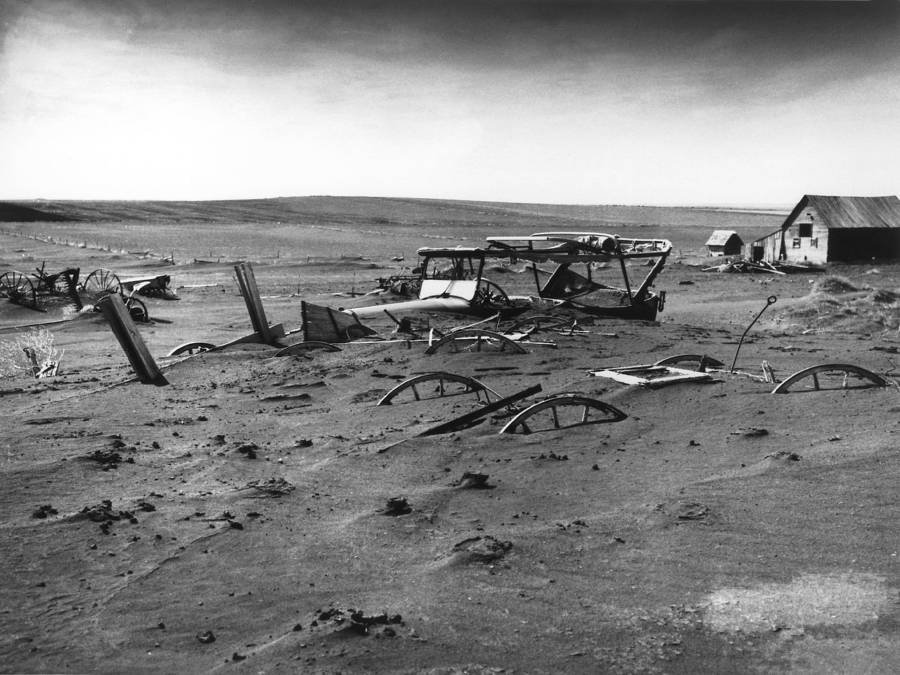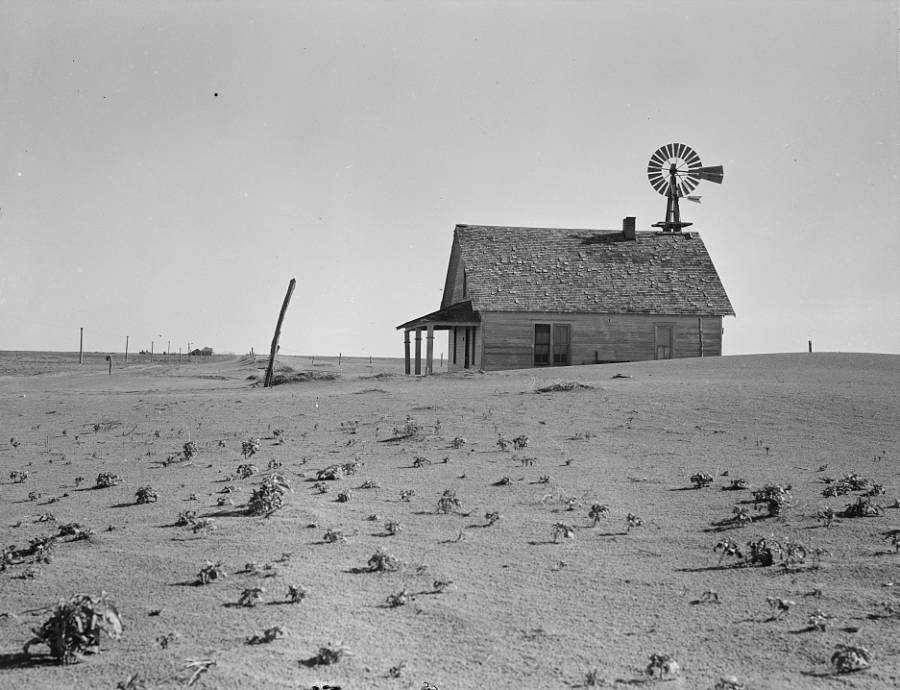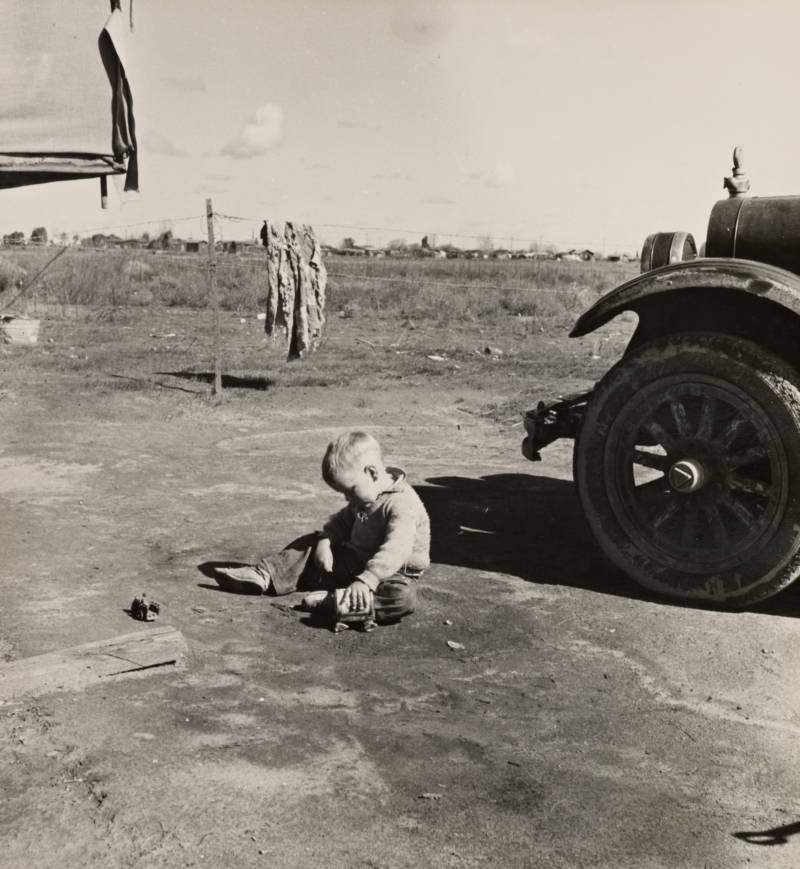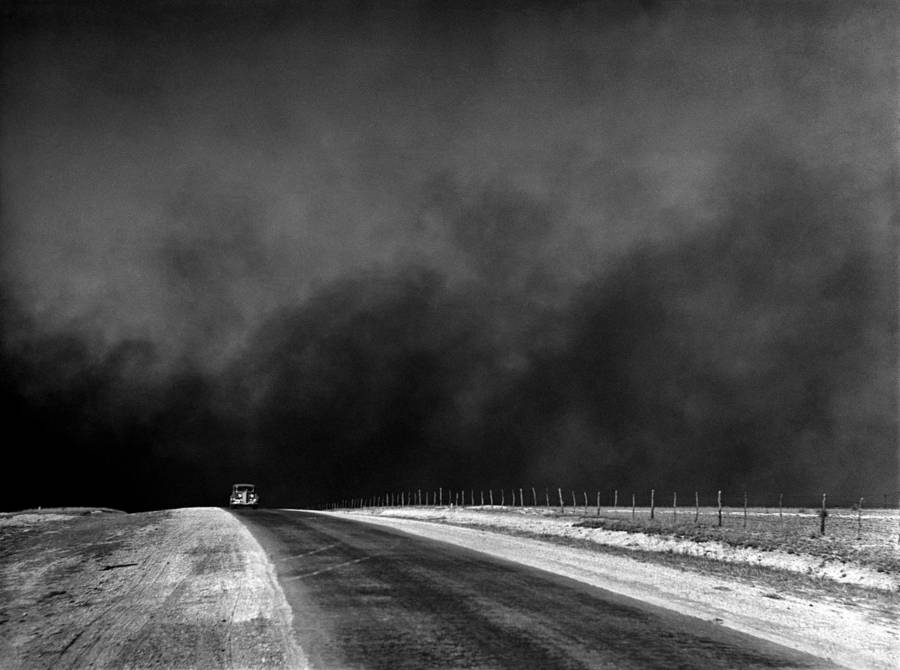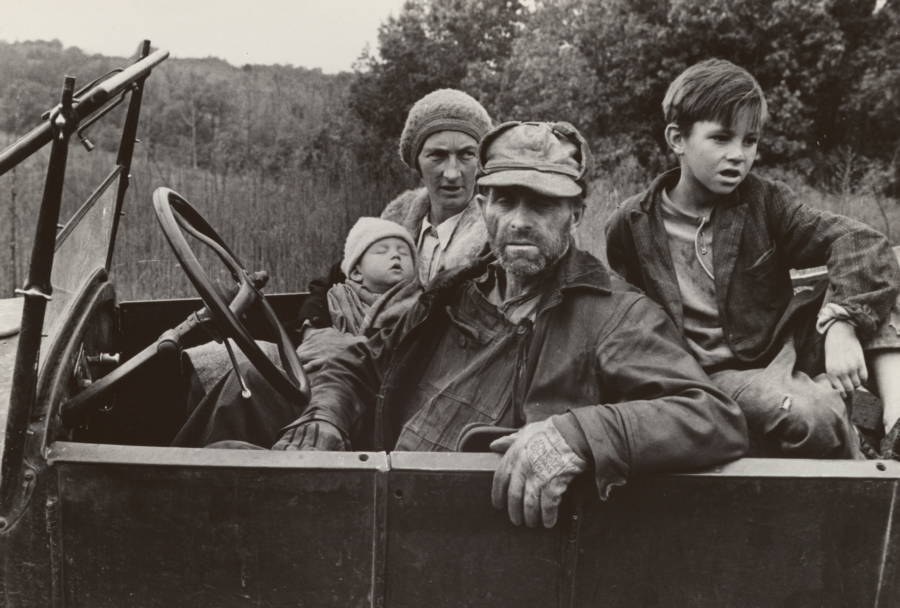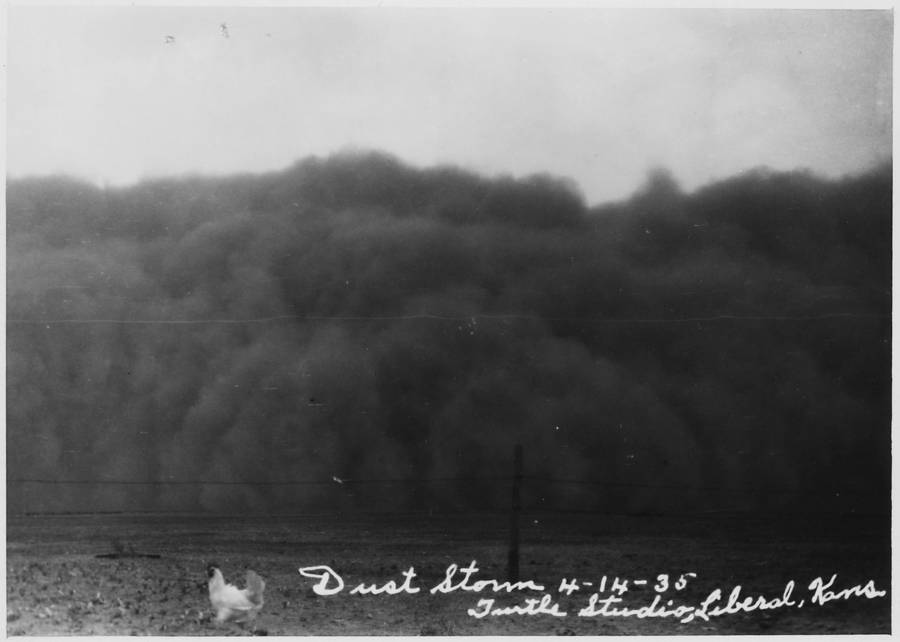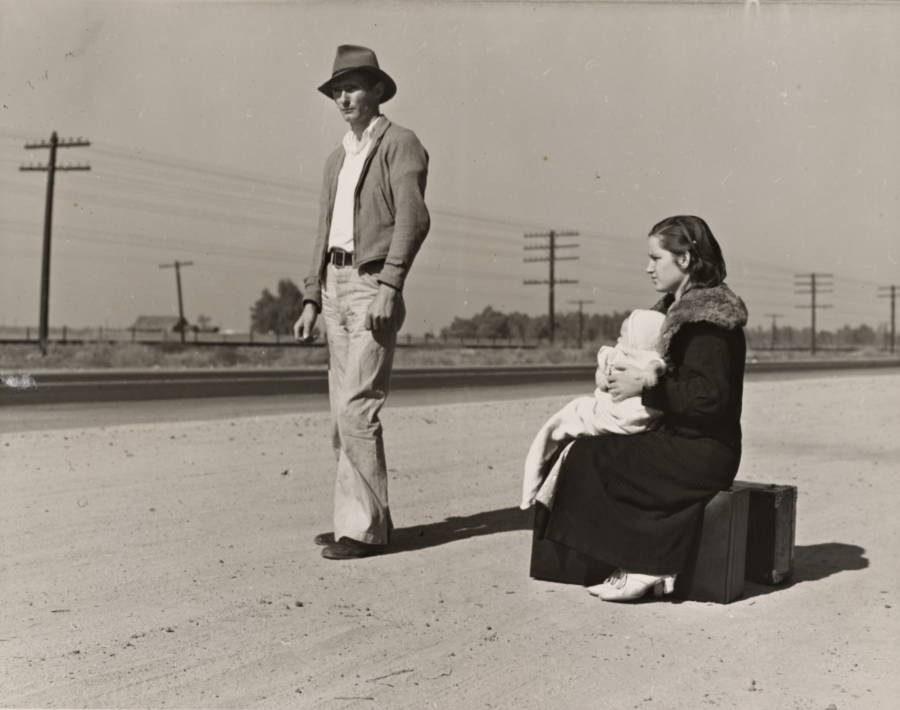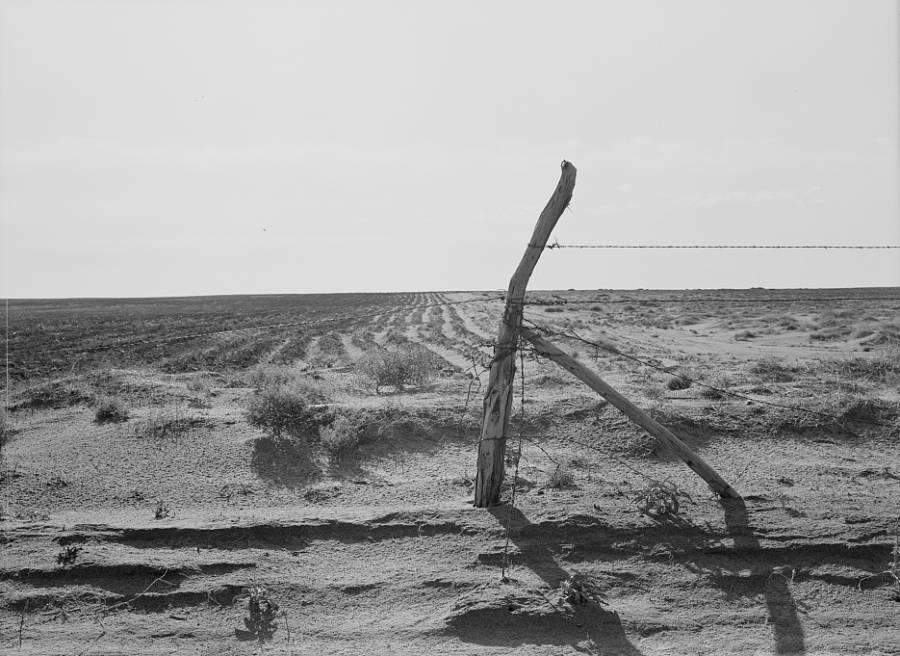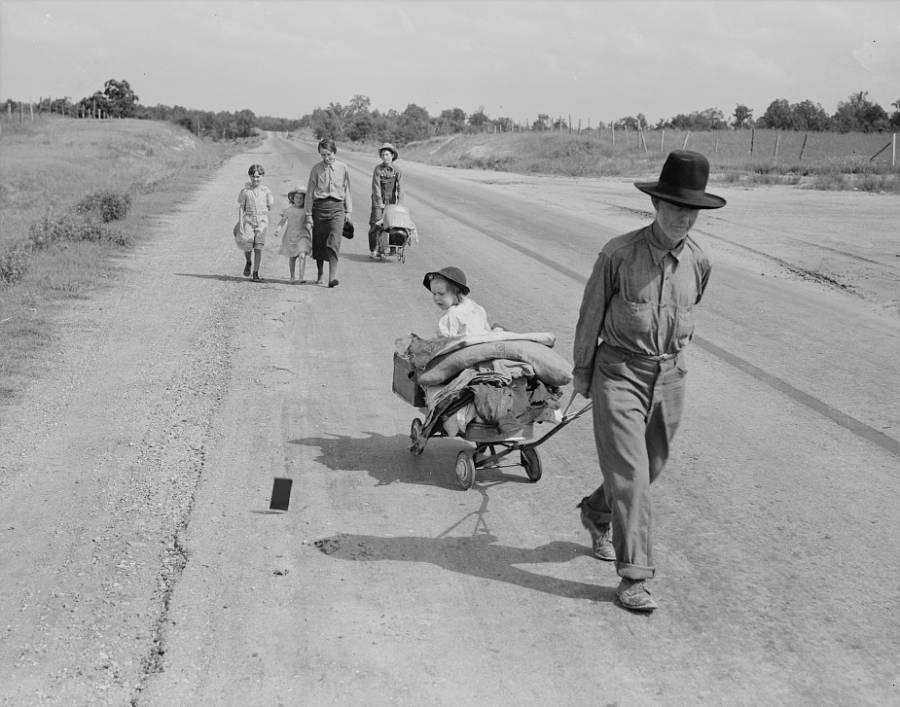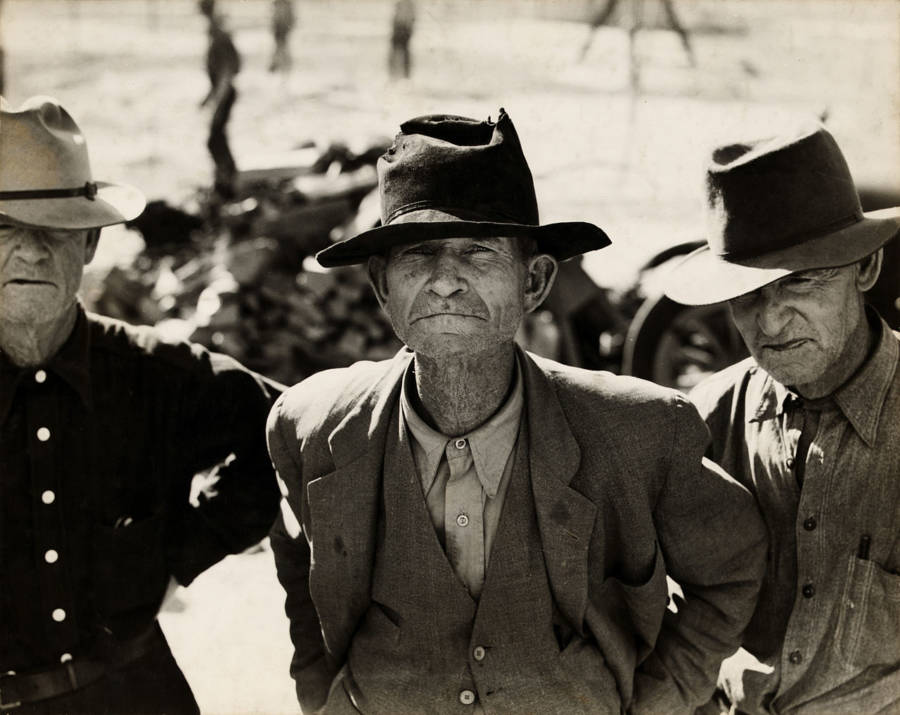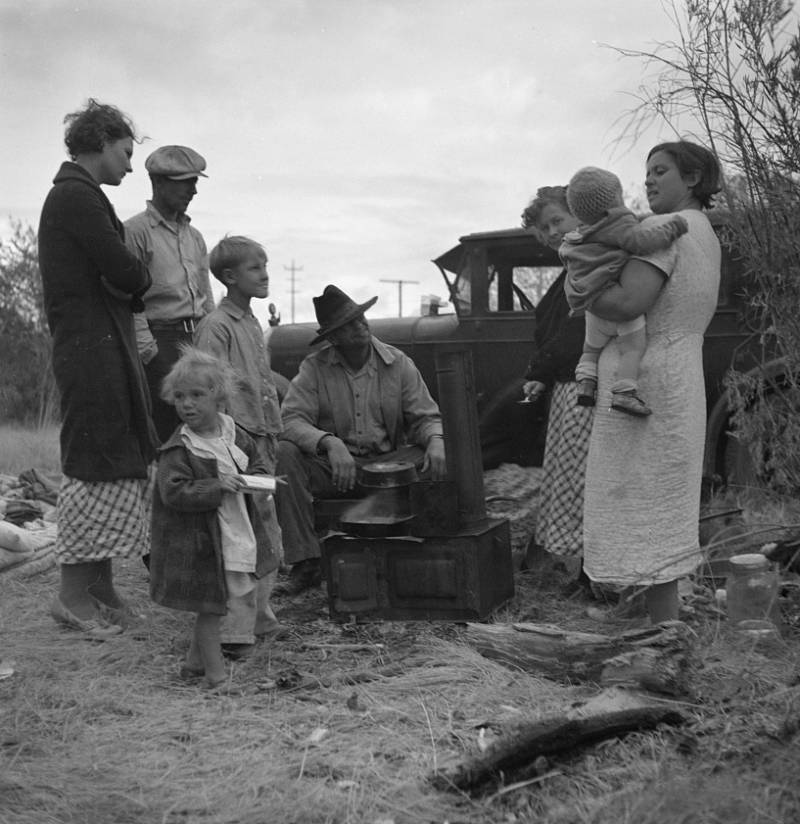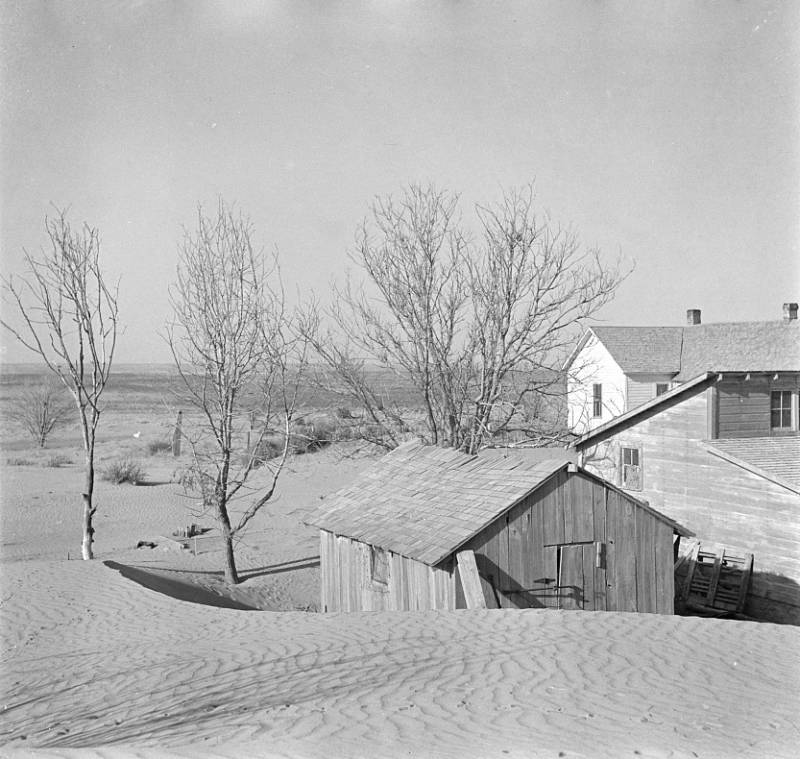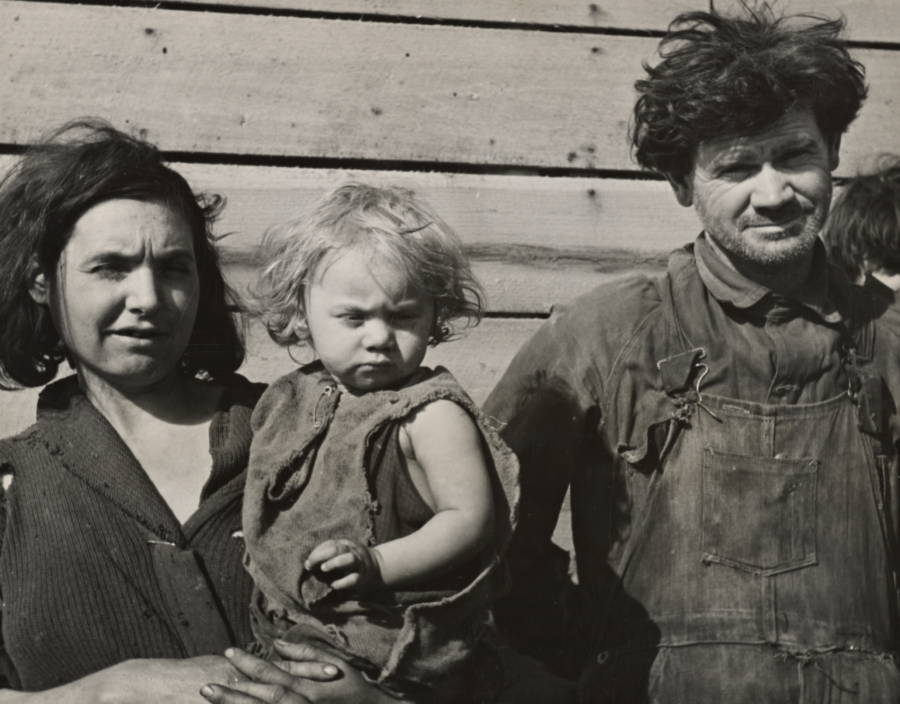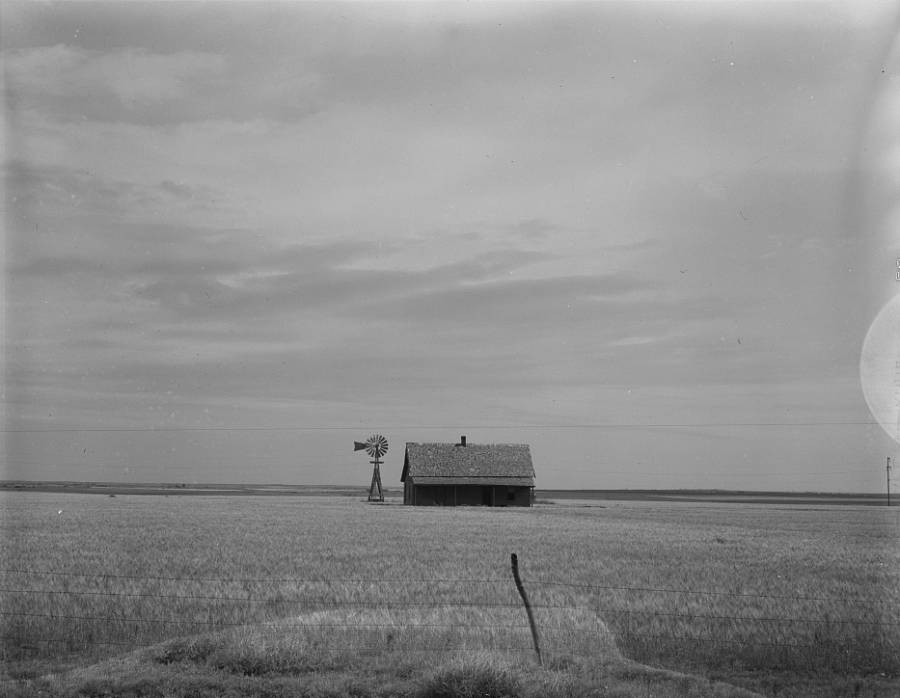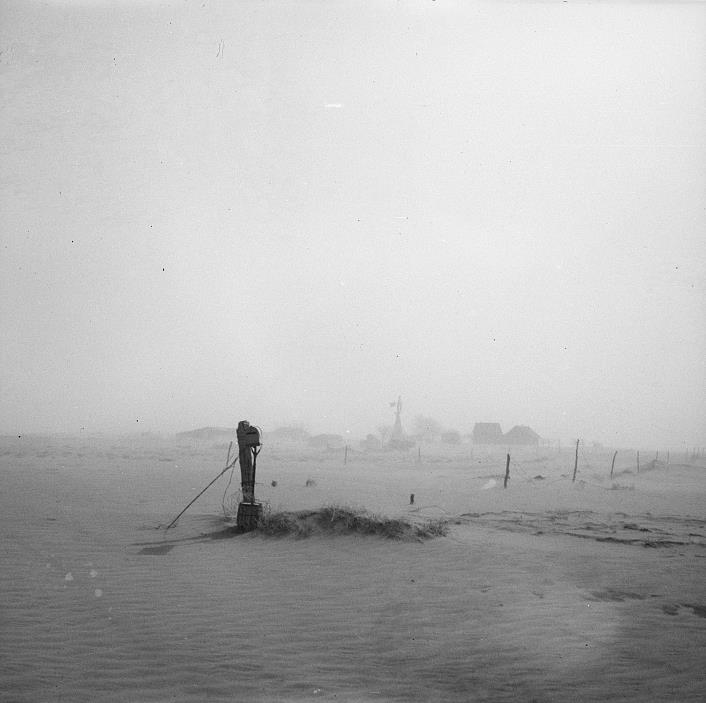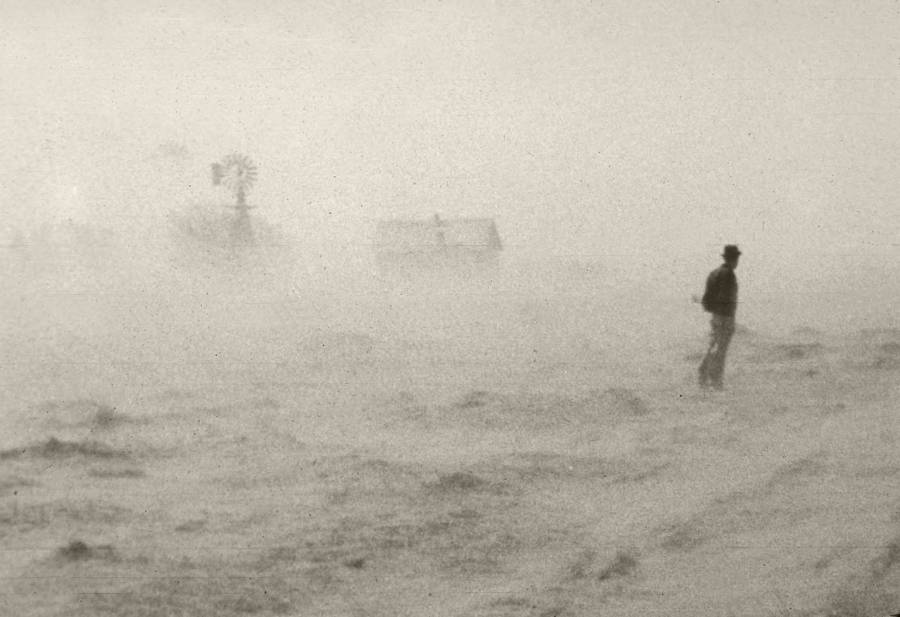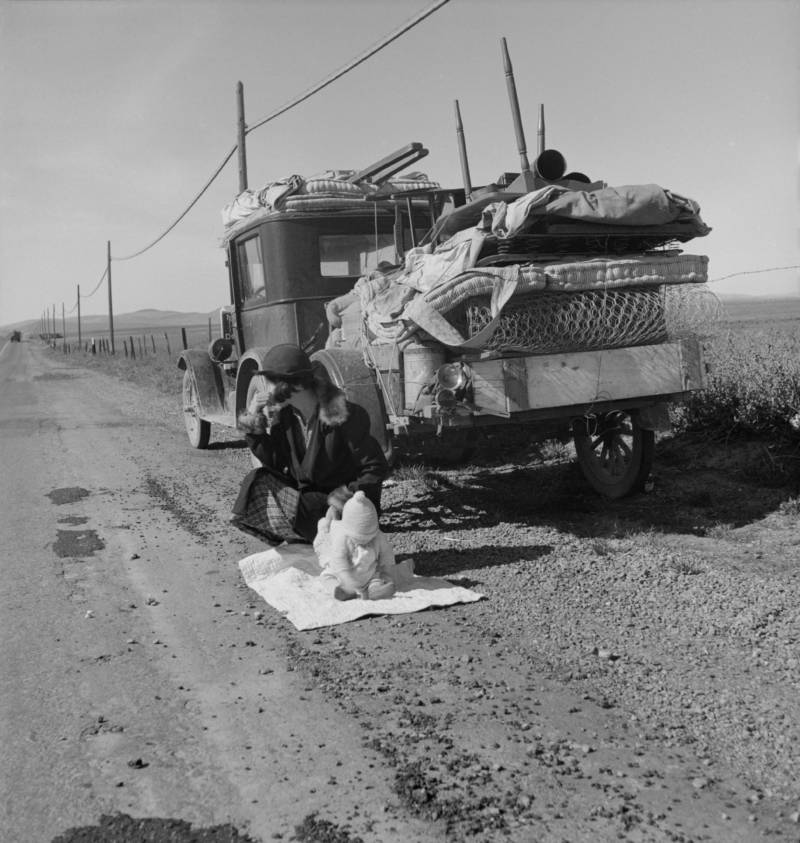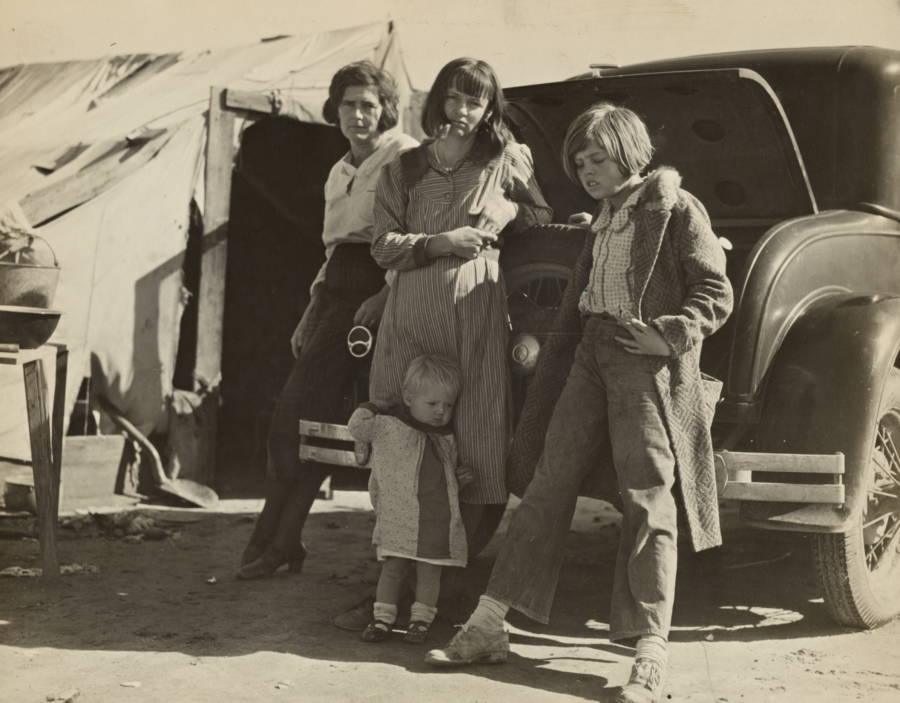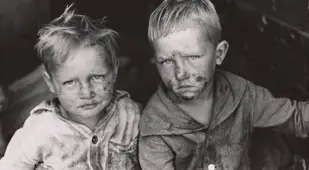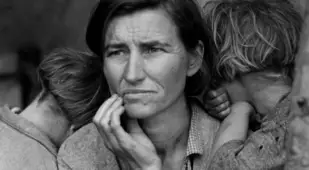1 of 48
Children of a migrant fruit worker in Berrien County, Michigan, July 1940.John Vachon/Farm Security Administration via New York Public Library
2 of 48
Farm machinery buried by a dust storm near a barn lot in Dallas, South Dakota, May 1936.United States Department of Agriculture via Wikimedia Commons
3 of 48
Thirty-two-year-old Florence Owens Thompson with three of her seven children at a pea pickers' camp in Nipomo, California, March 1936.Dorothea Lange/Farm Security Administration via Library of Congress/Wikimedia Commons
4 of 48
Dust Bowl farm in the Coldwater District, north of Dalhart, Texas, June 1938.Dorothea Lange/Farm Security Administration via Library of Congress
5 of 48
A child plays in a California migratory camp, 1936.Dorothea Lange/Farm Security Administration via New York Public Library
6 of 48
A dust storm looms behind a car in the Texas Panhandle, March 1936.Arthur Rothstein/Farm Security Administration via Library of Congress/Wikimedia Commons
7 of 48
Migrant worker looking through back window of automobile near Prague, Oklahoma, 1939.Russell Lee/Farm Security Administration via New York Public Library
8 of 48
The young son of a farmer walks amid the dust in Cimarron County, Oklahoma, April 1936.Arthur Rothstein/Farm security Administration via Library of Congress
9 of 48
A destitute family in the Ozark Mountains area of Arkansas, 1935.Ben Shahn/Farm Security Administration via New York Public Library
10 of 48
The "Black Sunday" dust storm, one of the worst of the entire era, hits Liberal, Kansas on April 14, 1935.National Archives and Records Administration via Wikimedia Commons
11 of 48
Children from Oklahoma staying in a migratory camp in California, November 1936.Dorothea Lange/Farm Security Administration via Library of Congress/Wikimedia Commons
12 of 48
Veteran migrant worker camped in Wagoner County, Oklahoma, June 1939. When asked where his home was, he told photographer Russell Lee, "It's all over."Russell Lee/Farm Security Administration via Library of Congress
13 of 48
Poor 24-year-old father and 17-year-old mother attempt to hitchhike with their baby on California's U.S. Highway 99, November 1936.Dorothea Lange/Farm Security Administration via New York Public Library
14 of 48
Landscape left barren by the Dust Bowl, north of Dalhart, Texas, June 1938.Dorothea Lange/Farm Security Administration via Library of Congress
15 of 48
A farmer and his sons walk amid a dust storm in Cimarron County, Oklahoma, April 1936.Arthur Rothstein/Farm Security Administration via Library of Congress/Wikimedia Commons
16 of 48
The children of a migrant family living in a trailer in the middle of a field south of Chandler, Arizona, November 1940.Dorothea Lange/United States Department of Agriculture via National Archives and Records Administration/Wikimedia Commons
17 of 48
"This is a hard way to serve the Lord": An Oklahoma refugee in California, March 1937.Dorothea Lange/Farm Security Administration via Library of Congress
18 of 48
Migrant family traveling on foot through Oklahoma, looking for work elsewhere after father fell ill but was refused country relief, June 1938.Dorothea Lange/Farm Security Administration via Library of Congress
19 of 48
Dust bowl refugee from Chickasaw, Oklahoma, now in Imperial Valley, California, March 1937.Dorothea Lange/Farm security Administration via Library of Congress
20 of 48
A woman identified as Mrs. Howard holds her baby at a migrant camp in California, 1935.Dorothea Lange/Farm Security Administration via New York Public Library
21 of 48
Tenant farmers in Imperial Valley, California, March 1937.Dorothea Lange/Farm Security Administration via Library of Congress/Wikimedia Commons
22 of 48
Children of a tenant farmer in Boone County, Arkansas, 1935.Ben Shahn/Farm Security Administration via New York Public Library
23 of 48
A drought refugee from Oklahoma attempts to prepare dinner in her makeshift outdoor dwelling in Marysville, California, August 1935.Dorothea Lange/Farm Security Administration via New York Public Library
24 of 48
The children of a migrant fruit worker in Berrien County, Michigan, July 1940.John Vachon/Farm Security Administration via New York Public Library
25 of 48
Dust storm damage in Cimarron County, Oklahoma, April 1936.Arthur Rothstein/Farm Security Administration via Library of Congress
26 of 48
Dust Bowl refugees camp along the highway near Bakersfield, California, November 1935.Dorothea Lange/Farm Security Administration via Library of Congress
27 of 48
A young migratory mother originally from Texas, now in Edison, California, April 1940. The day before this photo was taken, she and her husband had traveled 35 miles each way to pick peas for five hours, earning just $2.25 between them.Dorothea Lange/United States Department of Agriculture via National Archives and Records Administration/Wikimedia Commons
28 of 48
Sand dunes on a farm in Cimarron County, Oklahoma, April 1936.Arthur Rothstein/Farm Security Administration via Library of Congress
29 of 48
A migrant fruit farmer and his family rest at a camp in Marysville, California, June 1935.Dorothea Lange/Farm Security Administration via New York Public Library
30 of 48
Soil blown by Dust Bowl winds piled up in large drifts near Liberal, Kansas, March 1936.Arthur Rothstein/Farm security Administration via Library of Congress
31 of 48
Members of a poor family of nine who'd been living in a makeshift dwelling constructed from an abandoned car and using a nearby creek as their only water source along U.S. Route 70 between Bruceton and Camden, Tennessee, March 1936.Carl Mydans/Farm Security Administration via New York Public Library
32 of 48
An abandoned farm house in southwest Oklahoma, June 1937.Dorothea Lange/Farm Security Administration via Library of Congress
33 of 48
A man stands amid a raging dust storm at an unspecified location, circa 1934-1936.National Archives and Records Administration via Wikimedia Commons
34 of 48
An abandoned house on the edge of the Great Plains near Hollis, Oklahoma, June 1938.Dorothea Lange/Farm Security Administration via Library of Congress
35 of 48
A migratory field worker's makeshift home on the edge of a pea field, where they lived through the winter, in Imperial Valley, California, 1937.Dorothea Lange/Farm Security Administration via New York Public Library
36 of 48
A dust storm in Oklahoma, April 1936.Arthur Rothstein/Farm Security Administration via Library of Congress
37 of 48
A migrant farmer and his child in California, 1936.Dorothea Lange/Farm Security Administration via New York Public Library
38 of 48
A dust storm rages at an unspecified location, circa 1930s.United States Department of Agriculture via Wikimedia Commons
39 of 48
At the Midway Dairy cooperative, near Santa Ana, California, 1936.Dorothea Lange/Farm Security Administration via New York Public Library
40 of 48
A dust storm near Beaver, Oklahoma, July 1935.National Archives and Records Administration via Wikimedia Commons
41 of 48
A farmer in Kansas, March 1936.Arthur Rothstein/Farm Security Administration via Library of Congress
42 of 48
The "Black Sunday" dust storm approaches Spearman, Texas on April 14, 1935.National Archives and Records Administration via Wikimedia Commons
43 of 48
A mother and child at the El Monte Federal Subsistence Homesteads in California, 1936.Dorothea Lange/Farm Security Administration via New York Public Library
44 of 48
An abandoned farm in Cimarron County, Oklahoma, April 1936.Arthur Rothstein/Farm Security Administration via Library of Congress
45 of 48
A migrant mother from Missouri tends to her sick child after experiencing car trouble on U.S. Highway 99 near Tracy, California, February 1937.Dorothea Lange/Farm Security Administration via Library of Congress/Wikimedia Commons
46 of 48
A woman in a pea picker's camp in California, March 1937.Dorothea Lange/Farm Security Administration via Library of Congress
47 of 48
Dust Bowl refugees in California, 1936.Dorothea Lange/Farm Security Administration via New York Public Library
48 of 48
Like this gallery?
Share it:


